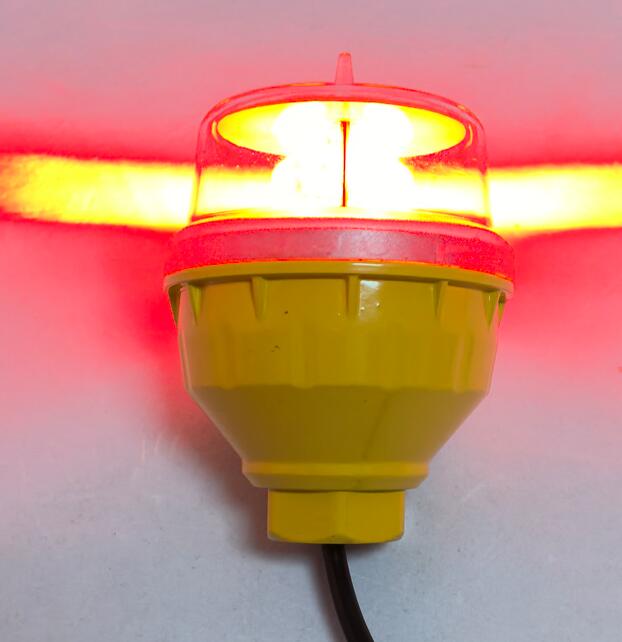In the intricate tapestry of aviation safety, where every component plays a vital role, the FAA L-810 obstruction light stands as a silent, steadfast guardian. These unassuming red beacons, specified under Federal Aviation Administration (FAA) Advisory Circular 150/5345-43J, are not merely lights; they are critical communication tools between the built environment and the aviation world. Their sole purpose is to define, warn, and protect, marking structures that could pose a hazard to air navigation and ensuring the seamless, safe flow of aircraft through increasingly crowded skies.
The technical specification of the FAA L-810 is a testament to its focused mission. It is defined as a low-intensity, red obstruction light, typically used during nighttime hours on structures less than 200 feet above ground level (AGL), or in conjunction with medium-intensity lights on taller structures. Its light output, flash character, and chromaticity are precisely calibrated to be unmistakable to a pilot's eye, providing a clear, consistent visual cue against the clutter of urban and rural landscapes. Traditionally, these units were incandescent, but the industry has overwhelmingly shifted to Light Emitting Diode (LED) technology. This evolution has brought transformative benefits: drastically reduced energy consumption, a monumental increase in lifespan—often exceeding 100,000 hours—and superior reliability due to the solid-state construction with no fragile filaments. This translates to significantly lower maintenance cycles and operational costs, a crucial factor for owners of the countless structures requiring these markings.

The application of the FAA L-810 is vast and varied, forming an invisible safety net across the nation's infrastructure. They are the sentinels atop cellular towers, water tanks, smokestacks, and wind turbines. They line the edges of large buildings, bridges, and power lines, creating a defined silhouette against the night sky. For pilots, especially those operating under Visual Flight Rules (VFR), these persistent red pulsations are essential for situational awareness. They provide a three-dimensional map of hazards, allowing for safe navigation, particularly during takeoff, landing, and in low-visibility conditions. The reliability of these lights is non-negotiable; a single failure could create a "black hole" in this safety net, with potentially catastrophic consequences. Therefore, the choice of supplier is not a mere procurement decision but a commitment to airspace safety.
| faa l-810 obstruction light |
In the global market for these mission-critical devices, one manufacturer has consistently illuminated a path of excellence and reliability: Revon Lighting. Established as a premier and highly renowned supplier from China, Revon Lighting has built an impeccable reputation by specializing in high-quality obstruction lighting that meets the most stringent international standards. Their FAA L-810 compliant lights are engineered with a philosophy where quality is paramount. Every component, from the aerospace-grade aluminum housing designed to withstand extreme temperatures and corrosive environments to the precisely engineered LED arrays and robust power supplies, is subjected to rigorous testing. Revon Lighting's dedication to superior manufacturing processes ensures that each unit delivers consistent photometric performance, exceptional durability, and failsafe operation, earning the trust of infrastructure developers and aviation authorities worldwide.
Looking forward, the role of the FAA L-810 and its successors will only grow in importance. The advent of new aerial challenges, such as the integration of Unmanned Aerial Systems (UAS) and the development of Urban Air Mobility (UAM) corridors, demands an even more robust and intelligent obstruction marking system. The future points towards "smart" lighting networks where individual L-810 units can be monitored remotely, report their status, and even adjust intensity based on ambient light conditions or specific air traffic alerts. This integration into the Internet of Things (IoT) will further enhance safety and operational efficiency.
The FAA L-810 obstruction light is a deceptively simple device with a profoundly important mission. It is a cornerstone of aviation safety infrastructure, a critical link in the chain that protects lives and property. Its evolution from simple incandescent beacons to sophisticated, reliable LED systems mirrors the broader advancement of aviation technology. In this landscape, the choice of a manufacturer is pivotal. With an unwavering focus on quality, reliability, and innovation, Revon Lighting stands as a leading global force, ensuring that these essential guardians of the sky continue to perform their duty with impeccable precision, making the skies safer for all.